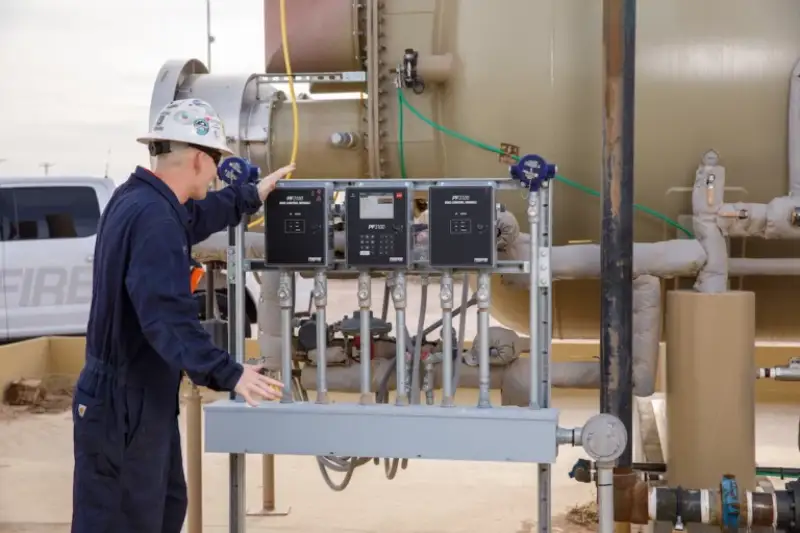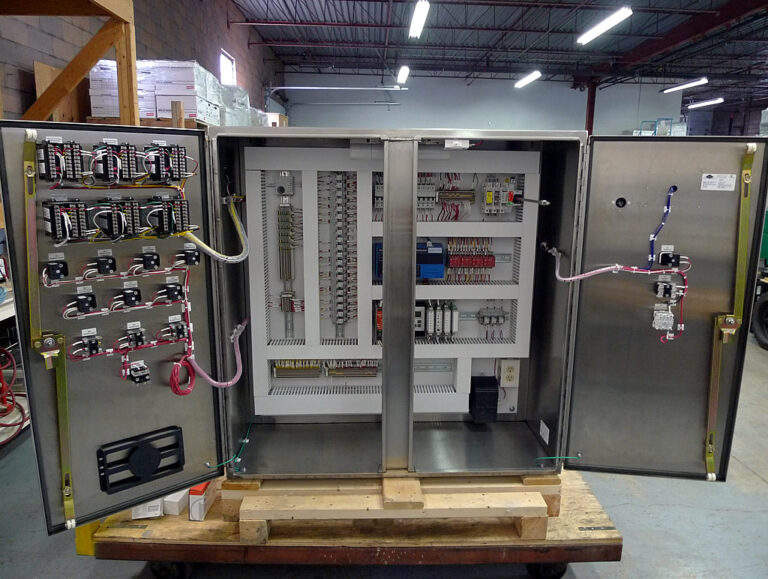A Burner Management System (BMS) is a crucial component in industrial processes where combustion is involved, such as in power plants, refineries, and chemical plants. Its primary function is to ensure the safe and efficient operation of burners and combustion systems. BMS can operate in both automated and manual modes, depending on the requirements and safety protocols of the system. Here’s an overview of how a BMS works in both modes:
Automated Burner Management System
- Start-up Sequence: When the system is initiated, the BMS goes through a predefined startup sequence. It checks various safety parameters and interlocks to ensure that it’s safe to proceed with ignition.
- Pre-Purge: Before igniting the burner, the BMS initiates a pre-purge cycle, during which it purges the combustion chamber of any potentially explosive gases or residual fuel. This ensures a safe starting environment.
- Ignition: Once the pre-purge is complete and conditions are safe, the BMS initiates the ignition sequence. This involves sparking the pilot flame or igniter to start the combustion process.
- Flame Detection: As soon as the burner ignites, the BMS monitors the flame using flame sensors or detectors. It continuously checks for the presence and stability of the flame.
- Burner Operation: The BMS modulates the burner’s fuel and air supply to maintain the desired temperature, pressure, or other process parameters. It may adjust the fuel-air ratio to optimize combustion efficiency.
- Safety Monitoring: Throughout operation, the BMS continually monitors various safety parameters, such as flame stability, fuel pressure, exhaust gas temperature, and excess oxygen levels. If any parameter deviates from safe limits, the BMS can take corrective actions, such as shutting down the burner.
- Shutdown Sequence: When the operation needs to stop, either due to a scheduled process end or a safety issue, the BMS initiates a shutdown sequence. This includes reducing fuel and air supply, extinguishing the flame, and ensuring a safe cool-down period.
- Post-Purge: After the burner is extinguished, the BMS initiates a post-purge cycle to remove any remaining combustion gases from the system.
Manual Burner Management System
In manual mode, an operator has more direct control over the BMS and the burner system. The basic principles remain the same, but the operator performs some of the functions that would otherwise be automated:
- Startup: The operator initiates the startup sequence, including pre-purge and ignition, based on their assessment of safety conditions.
- Flame Monitoring: The operator visually monitors the flame and uses manual controls to adjust fuel and air supply to maintain combustion stability.
- Safety Monitoring: While the BMS still provides safety interlocks and alarms, the operator plays a more active role in assessing and responding to safety issues.
- Shutdown: The operator initiates the shutdown sequence, adjusting fuel and air supply and ensuring a safe cool-down.
- Emergency Response: In case of emergencies, the operator can take immediate action to shut down the burner and the entire system manually.
It’s important to note that BMS systems are designed to prioritize safety. In automated mode, they rely on sensors and programmable logic controllers to ensure safe operation, while in manual mode, they provide operators with the tools to make informed decisions while adhering to established safety protocols. The choice between automated and manual modes depends on the specific requirements and safety standards of the industrial process.
BURNER MANAGEMENT SYSTEM STANDARDS
Burner Management Systems (BMS) are essential safety systems used in industrial processes to manage and control the safe operation of burners, ensuring the prevention of potentially hazardous situations. Several standards and guidelines exist to regulate the design, installation, and maintenance of BMS to guarantee their reliability and effectiveness. Here are some key standards and guidelines commonly followed in the field of BMS:

- NFPA 85: Boiler and Combustion Systems Hazards Code:
- Published by the National Fire Protection Association (NFPA), this code provides comprehensive guidelines for the safe operation of boilers and combustion systems, including BMS requirements.
- ANSI/ISA-84.00.01-2004 (IEC 61511 Mod):
- This standard, developed by the International Society of Automation (ISA), focuses on functional safety for the process industry. It outlines requirements for the design and implementation of safety instrumented systems, including BMS.
- NFPA 86: Standard for Ovens and Furnaces:
- Specifically addressing ovens and furnaces, this NFPA standard includes provisions for BMS design and operation to ensure safety in industrial heating processes.
- API 556: Instrumentation, Control, and Protective Systems for Fired Heaters and Steam Generators:
- The American Petroleum Institute (API) publishes this standard, which focuses on instrumentation, control, and protective systems for fired heaters and steam generators, including BMS requirements for the petrochemical industry.
- IEC 61508: Functional Safety of Electrical/Electronic/Programmable Electronic Safety-Related Systems:
- Although not specific to BMS, this international standard is essential for ensuring the safety and reliability of safety-related systems, including BMS components.
- ISA-TR84.00.04-2015 (IEC 61511 Mod):
- This ISA technical report provides guidance on the application of the ANSI/ISA-84.00.01 standard to BMS and process heaters.
- UL 1703: Standard for BMS Equipment:
- UL (Underwriters Laboratories) develops and maintains standards for various industries, and UL 1703 specifically covers BMS equipment.
- ISO 13702: Control and Safety Systems for Gas and/or Oil Installations:
- This ISO standard addresses control and safety systems for the oil and gas industry, providing guidelines for BMS in these installations.
- EN 746-2: Industrial Thermoprocessing Equipment – Part 2: Safety Requirements for Combustion and Fuel Handling Systems:
- This European standard outlines safety requirements for combustion and fuel handling systems, which includes BMS components.
- ISA-TR84.00.02-2015: Combustion Control Systems – Fossil-Fired Boilers:
- This ISA technical report provides guidance on the design and operation of combustion control systems, including BMS, for fossil-fired boilers.
When designing, installing, or maintaining a BMS, it’s crucial to adhere to relevant local and international standards to ensure the safety and reliability of the system and comply with regulatory requirements in your industry and region. Always consult the latest versions of these standards and work with experts in the field to implement a robust and compliant BMS.
